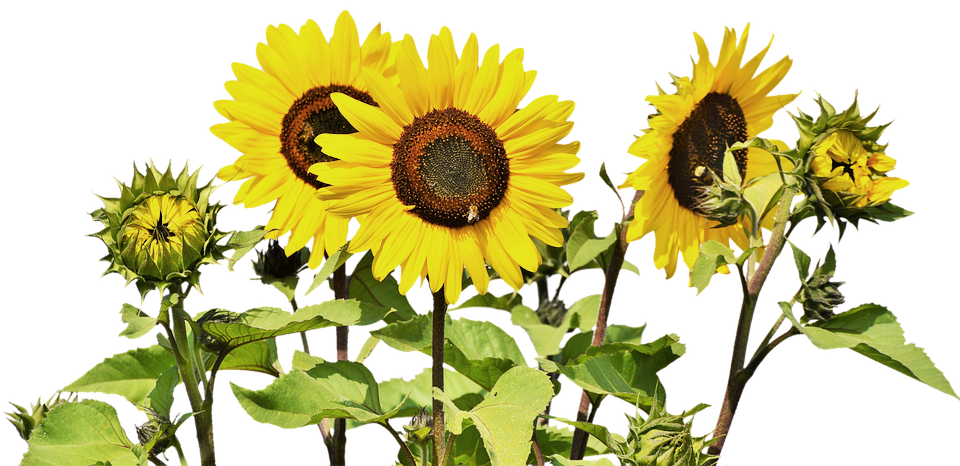
"Mulch" Ado About Mulch
By Chris Edmunds
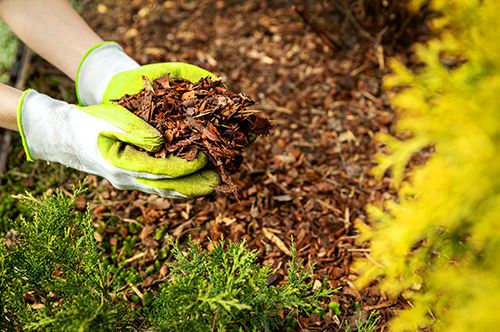
Mulch is an incredibly popular landscaping material—and with good reason. It's easy to use, readily available, affordable, and it looks nice and tidy. Best of all, organic mulches have positive health and environmental benefits for your yard.
The history of mulch dates back about as far as the history of gardening. Two thousand years ago, the Irish were using seaweed as mulch to keep down the weeds and add nutrients to the soil. Even before that, approximately ten thousand years ago, there is evidence that people were using a variety of materials as mulch to suppress weeds where they were tending crops.
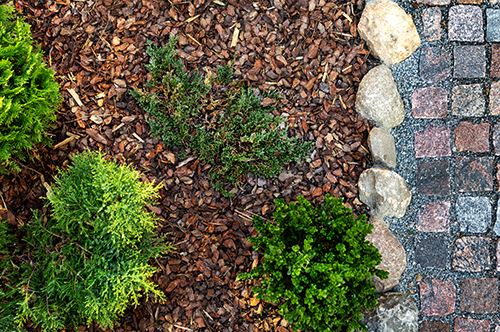
What Is Mulch, Really?
Mulch is any product that can be used to cover your soil. Mulch can be organic (like wood chips) or non-organic (like rubber playground footing). Non-organic mulches are generally more expensive and more difficult to source, and they're also a tad controversial among gardeners. While they last longer and protect the soil from drying out, they don't improve soil quality, so we don't recommend them for landscaping or gardening use. Rubber mulch is excellent for playgrounds, sports arena footing, or even footing for horse riding facilities. Basically, it is useful in places where you never want anything to grow.
What is The Point of Mulch?
In its most basic sense, mulch protects the soil. It prevents weeds from sprouting, shades the soil from the drying sun, wind, and erosion to safeguard the plant roots below and lock in moisture. In the case of organic materials, mulch improves the soil over time as it breaks down. Mulch can also insulate the roots of trees and shrubs from harsh weather.
What is Mulch Made Of?
There are so many different things that mulch can be made of. Just about anything that doesn't decay too quickly can be broken down into mulch.
The most common mulches are made from wood. Wood chip mulch is a byproduct of recycling old untreated lumber. Some items, like shipping pallets, are often made with untreated lumber, and when they've started breaking down and are no longer useful, they get chipped down into wood mulch for use in landscaping.
Bark mulch is bark that has been taken off trees and broken up. Bark mulch is generally a byproduct of the lumber industry. After a load of trees gets stripped, the bark mulch is sold for landscaping. There are also tree recycling companies who make bark mulch and wood chip mulch from trees that have come down due to natural disasters, land cleaning operations, or from residential neighborhood cleanup. This makes a useful product out of trees that have no value to the lumber or woodworking industry.
Leaf mulch is an excellent naturally-occurring mulch. When the leaves fall every year, they carpet the ground beneath them and break down, improving the soil.
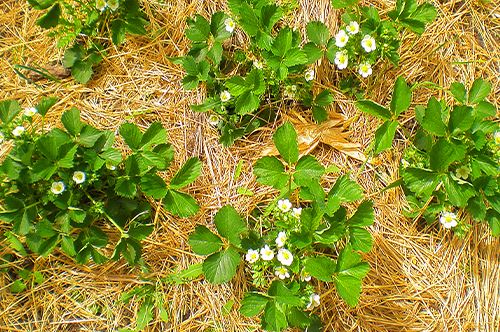 Straw or field hay can also act as mulch. They have particular benefits for garden plots as a winter cover and soil protection, which can then be worked in to improve the soil in spring.
Straw or field hay can also act as mulch. They have particular benefits for garden plots as a winter cover and soil protection, which can then be worked in to improve the soil in spring.
Cardboard or newspaper can also be used as a mulch to keep weeds down and improve the soil over time. They don't look quite as tidy as other types, and they also break down faster. However, they're very popular with no-till gardeners, who usually top it with a layer of wood mulch or compost to keep the wind from blowing off the soil surface..
Evergreen needles cover the ground under evergreen trees, and they also help protect and improve the soil. You can buy bales of pine straw to use in landscaping. Pine straw has an interlocking tendency that is very effective at preventing erosion on slopes.
Grass clippings are also commonly used as mulch to conserve water and improve the soil in garden beds. Please beware if you have treated your lawn recently with an herbicide, as the residue could affect your garden plants if it is still present on the clippings.
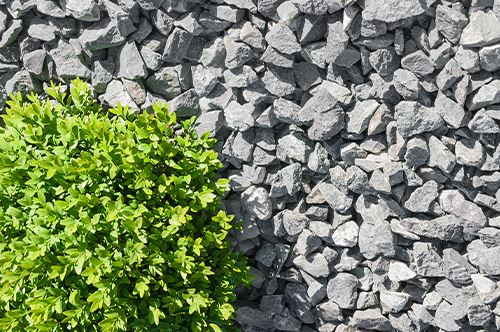 Rocks and gravel can also be used as mulch around shrubs and are usually placed over a landscape fabric layer. They may not add any nutrients to the soil, but the heat they retain can help extend the growing season a bit. They also look tidy and last a very long time. If using under trees it can be handy to have a leaf blower for the fall.
Rocks and gravel can also be used as mulch around shrubs and are usually placed over a landscape fabric layer. They may not add any nutrients to the soil, but the heat they retain can help extend the growing season a bit. They also look tidy and last a very long time. If using under trees it can be handy to have a leaf blower for the fall.
How Does Mulch Improve the Soil?
Over time, organic mulch breaks down, turning into soil itself. This process can improve the soil in several ways.
- It adds essential nutrients to the soil.
- It can reduce soil compaction and improve drainage.
- It helps the soil retain moisture for your plants, trees, and shrubs.
- It encourages beneficial soil organisms that aid in plant health.
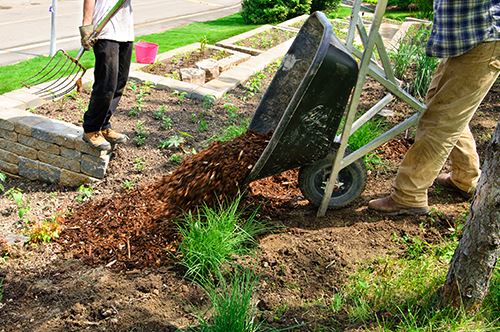 What Should I Do With Mulch?
What Should I Do With Mulch?
Mulch is used in many different ways in landscaping.
If you have large evergreen trees in your yard where the grass is struggling to grow, you can replace the grass with a few inches of mulch. The mulch will help protect the tree roots in winter and look neater than bald patches of lawn. Don't mound the mulch around the tree trunk, as piling it on could cause early decay and make the tree vulnerable to disease.
If you've got a row of shrubs for a hedge, or shrubs in general, a good layer of mulch underneath them will help retain moisture and keep the weeds down.
In a perennial bed, mulch helps to choke out weeds, keeps the soil from drying out, and insulates plant roots, which protects them from the freeze and thaw cycles in spring. It also makes a pleasant neutral background to help your beautiful flowering perennials stand out.
Essentially, anywhere that you don't want grass or weeds, you can use mulch.
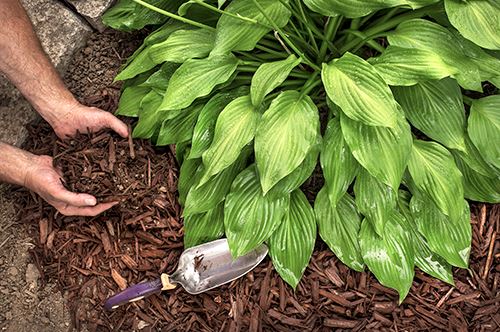 How Do I Apply Mulch?
How Do I Apply Mulch?
Mulch should be applied in a layer at least 2-3 inches thick. If an area is particularly weedy, you can lay down a weed barrier first, like landscaping fabric or even newspaper.
If you want to protect perennials or newly planted shrubs and trees, it's a good idea to do an extra thick layer approximately 3-5 inches deep.
When it comes to mulching technique, the only thing to avoid is piling mulch up against the bases and trunks of plants. Known as "volcano mulching", piling mulch up around the base invites pests and bacteria to set up shop. Instead keep a half inch or so of bare soil around the plants stem and then you can add the 2-3 inches depth in the remainder of the root zone.
When Should I Apply Mulch?
You can apply mulch at any time of the year, though it would probably be pointless to put mulch down over snow in the winter.
Mulch does need to be topped up every few years as it breaks down and decays into soil, but you can re-apply it at any time throughout the season.
If you want to protect plants for the winter, fall is the best time to add more mulch to insulate roots.
Mulch is often considered “the gardener’s best friend,” and it’s clear to see why. This multi-purpose material serves so many important functions for your plants and the look of your landscape. Keep your mulch topped up for a healthy and beautiful garden all season long!

